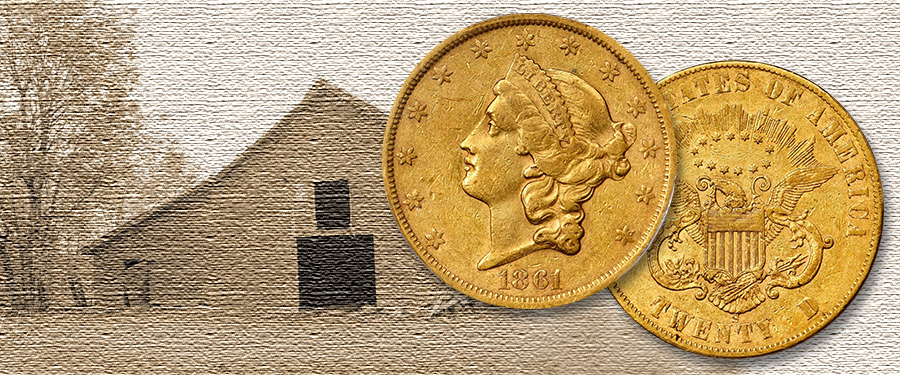
In 1937 numismatists were startled to learn of a very strange 1861-S gold coin that came to light with a few other United States gold pieces under an old barn in Hull, Texas.
This particular 1861-S was unlike the regularly-seen double eagle in that the letters in UNITED STATES OF AMERICA and TWENTY D. on the reverse were in letters taller and narrower than usual. The editor of The Numismatist consulted a copy of the 1912 work on pattern coins by Edgar H. Adams and William H. Woodin and found a somewhat similar piece listed, but as a pattern made in Philadelphia. There was no mention of an 1861-S coin. He concluded that the 1861-S was a new variety of pattern made—possibly by inadvertently using a pattern die—in San Francisco, as evidenced by the tiny "S" mintmark.
As time went on, coin collectors searched their holdings, quantities of $20 gold coins became available from Europe, and numismatic interest increased in $20 coins. It was found that the 1861-S Paquet Reverse $20, as it came to be known, was rare, but hardly unique. Today several hundred are known, most of which grade in the Very Fine to Extremely Fine range. Examples come on the market with some frequency, often not mentioning the interesting story behind the fascinating reverse. The demand for them is very strong. According to The Guide Book of United States Coins a VF-20 is valued at $35,000 and an AU-55 is valued at $115,000.
What other varieties of gold coins were found in Hull, Texas, in 1937? The information remains unpublished to this day. Often, when hoards and treasures of gold coins are found, the denominations and varieties are not recorded for history. This is true of gold coins found in 1935 in Tuskegee, Alabama, when workmen tearing down an old hotel found $185 face value in gold coins dated from 1834 to 1854 when they pried a mantle from a wall. It was conjectured that a fearful guest had hidden the money there during the Civil War. No account of the coin denominations or specific varieties was given.





